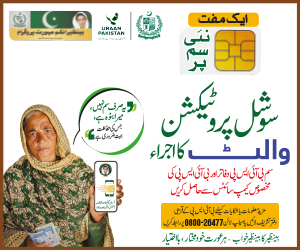Mentoring youth: banking and economy
The following was composed as an address to the 17th Youth Parliament, organised by Pakistan Institute of Legislative Development and Transparency, on August 28, 2022.
I have been posed with a few questions by the organisers of the event with respect to the topic of my talk. I would like to begin by shedding light on my decision making process while bringing about impactful changes at the Bank of Punjab (BOP), making it more consistent with customers’ expectations of a modern, digitised, tech-savvy, and customer-centric financial institution.
Under my leadership, it remains a strategic priority to position the bank as having the risk appetite of a public sector organisation, coupled with service excellence of a private sector entity, without compromising on governing control regime with robust environment of compliance, risk and audit.
Another strategic priority was to attract and retain the top-most talent from the market – subject matter specialists and experts – and this was tempered by instilling a culture of meritocracy across the organisation, wherein high performance is incentivised and career progression is purely merit-based.
We had marked 2021 as the year of “Our People” and 2022 as the year of “Empathy”. What this entails on the organisational level is the assertion that the bank puts the welfare of its people and their families as one of its foremost priorities. Additionally, another area of focus that was previously overlooked is leveraging social media for better internal and external communication. Now, BOP is closer to being accepted as a household brand name, and its competitive products and services are becoming known to everyone.
Significant focus was also exerted on Corporate Social Responsibility. I am a firm believer that business growth must go hand in hand with contribution to society, particularly, in terms of giving back to the less fortunate members of our community, enhancing financial inclusion, and improving lives through literacy and empowerment.
Insofar as the structural changes that I would like to see in the banking sector over time, there are three core aspects that I would like to address in this context. Firstly, the share of private sector credit shall increase with reduced reliance on financing to the dominant borrower (ie the government of Pakistan).
Compared to its peer economies, Pakistan’s financial sector remains underdeveloped, principally in financing the private sector. This can be demonstrated by considering credit or loans to the private sector as a percentage of GDP. While credit to the private sector in Pakistan has increased in absolute terms, it has declined as a percentage of GDP (17% in 2020, down from 29% in 2008).
The reasons for this are multifaceted; the biggest impediment being government borrowing. Credit from the banking sector to the government has risen by more than 400% in the last decade.
This rapid broadening of financing of the government has resulted in 66.8% of all credit extended by the banking industry being directed towards the government (as of December 2021). Another reason, on the demand side, remains Pakistan’s large informal sector.
Second one is: the constitution of the banking industry. Currently, it’s totally lopsided and concentration of assets and liabilities rests with a handful of large banks, who literally drive the agenda of the entire sector.





